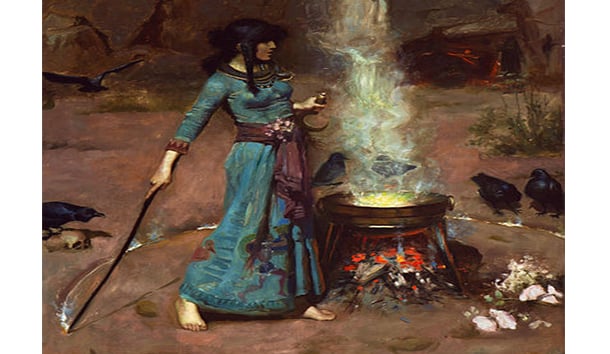I may be stereotyping Chronicles readers unfairly, but I suspect that not many read witches&pagans. If your subscription has lapsed, I draw your attention to a recent feature that actually has far-reaching consequences for more mainstream believers of all kinds.
In an interview, well-known pagan author Diana L. Paxson complained that
The generation that founded modern American paganism in the 1970s is rapidly aging. . . . Pagan groups that haven’t found a way to integrate younger members may be lost, though emerging Pagan libraries are working to preserve our history. . . . The children of the first generation of modern Pagans have now grown up, and although many of them identify as Pagan and may maintain connections to their family-based practices, very few are active in Covens or Pagan community activities.
It is especially difficult to attract millennials to the faith.
The trend that Paxson discusses is in fact one of the great unreported stories in American religion—namely, the near-evaporation of the country’s once-thriving mystical, esoteric, and occult traditions. I particularly think of the New Age movement, which received its title around 1980, but which was deeply rooted in American religious history.
Think back to the world of the 1970’s and 80’s, and the mass public interest in esoteric themes: reincarnation and crystals, telepathy and UFOs, shamans and gurus, pseudo-American Indian practices. Once upon a time, news stories treated such themes as UFOs and the Bermuda Triangle as deadly serious and plausible. Recall the national upsurge of fascination with the Harmonic Convergence of 1987. Yes, plenty of people are still interested in such broadly New Age ideas—remember the baloney surrounding the Mayan calendar—but they have lost their presence in mainstream culture. Certainly, a broadly New Age audience is still out there, and we see their presence on the web. But where is their impact? Where is the mass audience that existed not so long ago?
If they still existed in the millions, I would expect (for instance) to see Hollywood movies catering to their interests and enthusiasms. We would expect that major trade publishers would do the same, reflected in New Age crossover titles appearing on the bestseller lists. We would see gurus, shamans, and channelers making a good living by packing large lecture halls with gullible followers. Thousands of discussion groups would be getting together to chat about their experiences with reincarnation or telepathy. We would hear excited talk about Guru X, who is the unannounced messiah.
I see little resembling any of the above anywhere in the country. (One exception might be the vulgarized Kabbalah that appeals to Hollywood celebrities, but that’s clearly a niche.) Just who are the modern equivalents of the messiahs and gurus of the 1970’s and 80’s? I can’t think of any.
When I look at a major college campus like Penn State, with 45,000 undergraduates, I see next to nothing, no obvious signs of interest in telepathy, reincarnation, crystals, gurus, and certainly nothing organized. Membership in the university pagan group does not reach into double digits. If you do go to a mainline bookstore, the New Age section will be tiny, largely filled with stuff from decades long gone.
I base this on impression and anecdote rather than any kind of serious ethnography, but I believe that New Age devotees today are a pretty aged bunch of boomers and older. In fact, as Diana Paxson suggests, they look very much like the congregation of one of the staid mainline churches. I’m sure there is survey evidence about how these beliefs have shifted (or not) over time, but my impression is that America’s New Age has largely sunk under the waves, like Atlantis. As the musical Hair did not exactly say, “This is the waning of the Age of Aquarius.”
If this decline reflected a shift toward orthodoxy, that would be one thing, but it does not. Instead, I believe what we are seeing is a general reduction of interest in spiritual or religious matters across large sections of society, an evaporation of the broad but ill-focused concern that manifested itself in the supernatural boom of the 70’s. Whatever its harmful and downright silly aspects, that widespread spiritual activism and inquiry also contributed to the potent religious upsurge within Christianity and Judaism.
In other words, the first symptom we might expect of genuine American secularization would be a precipitous decline in activism and enthusiasm on the spiritual fringe, which is exactly what has taken place over the past two decades.

Leave a Reply